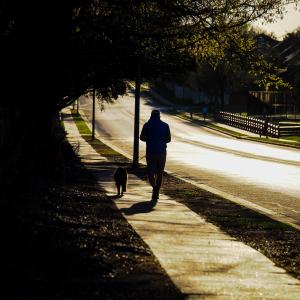
By vet Mollie Rudd
With the dark nights approaching, we need to be vigilant about road safety and the dangers that traffic can pose to our beloved four-legged friends.

Here are six top tips for keeping our pets safe near roads:
1. Make sure you have control: Always keep your dog on a short secure lead, attached to a well-fitted harness or collar. Avoid extendable leads. And check your equipment regularly for signs of wear and tear.
2. Be SEEN and stay safe! Always wear bright coloured clothing at night and ensure your pets are visible by investing in suitable reflective harnesses, high visibility coats, LED collars or lights.
3. Teach your dogs road awareness: Training your dog to understand simple commands like “sit” and “stay” or “wait” is invaluable.
4. Plan ahead! Stick to a safe, familiar route at nighttime.
5. Make sure your pet has ID: Ensure your pet is microchipped and that the chip remains registered with your most up-to-date contact details. A collar and tag showing your name, address and contact number is also a must.
6. Pet insurance: A good pet insurance policy will help provide you with financial cover in the unlucky event of an accident.
Signs that could suggest your pet has been involved in a Road Traffic Accident (RTA) include wounds, scuffed nails/claws, limping and stiffness, breathing problems, pain (growling, crying, off food, guarding an area of their body), pale gums and cold feet and ears.
If your pet was unfortunate to be involved in an RTA, it is crucial that they are checked by a vet immediately. Even if they do not show any obvious signs of injury, there could be some serious internal injuries which could be missed from the outside.
Contact your nearest vet immediately, stay calm and keep your pet warm and dry.
Consider safely muzzling your dog if there is a risk of you being bitten but NEVER muzzle your pet if they are showing signs of breathing difficulties or vomiting.
Do NOT give your pet any food or drink in case they require any anaesthetic. Small amounts of water is fine.
If you suspect a spinal injury avoid twisting their spine. Support their head and neck and carefully roll them onto a stiff board, car parcel shelf, or blanket to transfer them to your vehicle.
If your dog is showing breathing problems remove their collar and open their mouth to ensure there are no obstruction.
Cover any wounds with a clean cloth and apply gentle pressure to stop any bleeding.